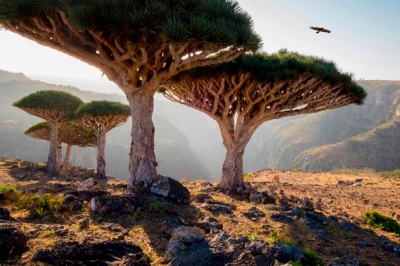
The Socotra archipelago is located in the Northwest Indian Ocean near the Gulf of Aden in Yemen. The name Socotra can be traced back to the Sanskrit dvipa-sakhadara which means ‘island abode of bliss’. It is 250 kilometres long and contains four islands and two rocky islets.
Socotra almost appears like an extension of the Horn of Africa. Among the islands that make up the archipelago, the largest one extends eastward from the Horn of Africa and has an area of about 3600 square kilometres. The capital and largest town of the archipelago is Hadiboh in the northern coast.
The universal relevance of this site lies in its unique biodiversity. 37 per cent of the 825 plant species, 90 per cent of the reptiles and 95 per cent of the land snail species in Socotra are found nowhere else in the world.
The plants in the archipelago also include the dragon blood tree which produces a red sap. Dragon blood trees too are unique to the archipelago and not found anywhere else in the world. Socotra was made a UNESCO World Heritage Site in 2008.
Picture Credit : Google



